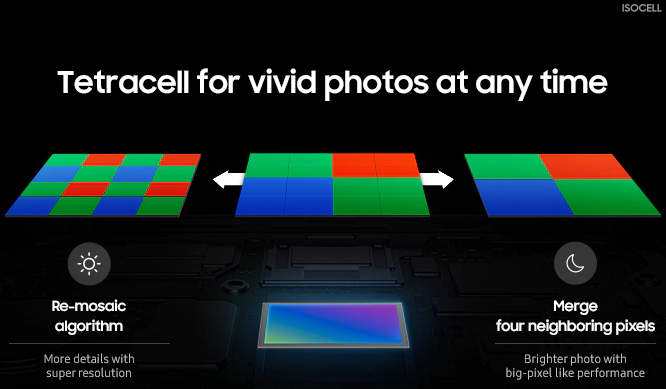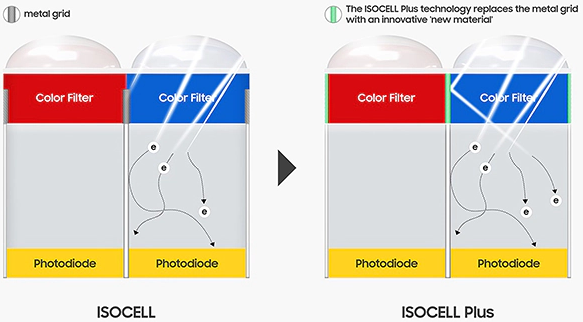
Samsung Presented the World’s First 108 MP Image Sensor for Smartphones
- Samsung and Xiaomi have created the highest resolution and largest mobile image sensor ever.
- The “ISOCELL Bright HMX” comes with the new ISOCELL Plus and Tetracell technologies.
- This sensor has the capacity to revolutionize mobile photography, but will also introduce design limitations.
Called the “ISOCELL Bright HMX”, Samsung’s new smartphone image sensor promises to take us to the next chapter of “pocket photography”, if we can still claim that flagship devices fit in our pockets. This new sensor is the result of the collaboration between Samsung Electronics and Xiaomi Corporation, so we expect to see it getting deployed in devices of these two manufacturers before it becomes available to others. According to the announcement, the new sensor will be capable of recording 6K video (6016 x 3384) in 30 fps (frames per second) without any field of view losses.
So, what does the number 108 MP mean in practice, and should we really expect to see a noticeable difference compared to the 48 MP sensors that were the top until recently? The answer is, it depends. This is always the case with optics and imaging, as a single number doesn’t mean a thing on its own. Having so many pixels to work with means that the images will be very sharp and every detail will be captured by its own dedicated pixel. However, cramming over 100 million pixels in a small area causes problems as well, as they become tiny and eventually can’t take much light in.
To address this problem, and as the target resolution is such a large number, the HMX will be the first mobile image sensor to come at the hefty size of 1/1.33” (12.7 mm). This maintains the pixel size at 0.8 μm, which is the same that we see in the 48 MP sensors. Yes, this may be far from full-frame DSLRs, but it is an impressively large sensor size for mobile devices and one that will most likely lead to design compromises such as smaller batteries, thicker bodies, etc.
As they have done with other ISOCELL image sensors, Samsung will equip the HMX with their Tetracell technology, which practically merges neighboring pixels to enable them to capture more light. This is obviously useful for low-light conditions, in which the tiny pixels of the HMX would otherwise struggle to capture any light.
image source: https://www.samsung.com
To complement this impressive sensor, the ISOCELL Plus technology which was introduced just last month promises 15% more enhanced light sensitivity, reduce optical performance losses, and almost eliminate light reflection interference from neighboring pixels. This is partly achieved by using a new innovative material made by Fujifilm instead of the metal barrier that was used so far.
image source: https://www.samsung.com
Do you think that the new 108 MPixel Bright HMX sensor by Samsung will revolutionize smartphone photography, or do you think it will be short-lived, underused, and quickly surpassed by newer technologies? Let us know of your opinion in the comments below, or on our socials, on Facebook and Twitter.







